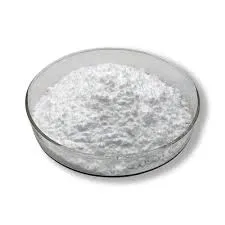
កញ្ញា . 30, 2024 00:58 Back to list
Understanding the Benefits and Applications of Redispersible Powder in Various Industries
Understanding Redispersible Powder A Key Ingredient in Modern Construction Materials
Redispersible powder, often referred to as redispersible polymer powder (RDP), is an essential material in the field of construction and building chemistry. It is a white free-flowing powder obtained by spray-drying a polymer dispersion, which can be re-dispersed in water, making it invaluable in various applications. Its unique properties and mechanisms are revolutionizing the way construction materials are formulated and utilized.
One of the primary functions of redispersible powders is to enhance the performance of cement-based and gypsum-based systems. When added to these substrates, RDPs improve their flexibility, adhesive strength, and durability. This is particularly important for applications such as tile adhesives, stucco, and renovation mortars, where the end product must withstand significant physical stresses and environmental conditions. The integration of redispersible powders allows these materials to maintain their integrity over time, providing lasting results.
The main appeal of redispersible powders lies in their ability to modify the characteristics of the base material. For example, RDPs can improve water retention, which is crucial during the curing process of cement and gypsum products. Enhanced water retention helps to prevent issues such as cracking and shrinkage, which can ultimately lead to material failure. Additionally, RDPs enhance processability, making it easier for workers to handle and apply the mixtures without compromising quality.
Another significant benefit of redispersible powders is their contribution to the development of lightweight materials
. In recent years, the construction industry has increasingly focused on reducing the weight of building materials to ease transportation and improve installation efficiency. RDPs enable the creation of lightweight formulations without sacrificing performance, which is essential in modern construction techniques.redispersible powder

Moreover, redispersible powders also play a crucial role in energy efficiency. By incorporating RDPs into insulation materials, builders can effectively reduce energy consumption, leading to lower utility bills and a smaller carbon footprint. This aligns with the growing trend towards sustainable building practices and eco-friendly materials, as many consumers and builders prioritize environmentally responsible choices.
The versatility of redispersible powders extends across various applications beyond just tile adhesives and mortars. They can be found in exterior insulation and finish systems (EIFS), plastering compounds, and even paints and coatings. Their adaptability makes them suitable for a wide range of formulations, allowing manufacturers to develop customized solutions tailored to specific performance requirements.
Incorporating RDPs into construction materials is not without challenges. The quality and performance of the redispersible powder can vary significantly depending on the manufacturing process and raw materials used. This necessitates stringent quality control measures during production to ensure consistency and reliability in the final products. Additionally, formulators must carefully consider the balance of components when designing mixtures, as too much RDP can negatively impact the desired characteristics.
In conclusion, redispersible powder is a crucial ingredient in modern construction materials, offering a plethora of performance enhancements that improve the durability, flexibility, and efficiency of various applications. As the construction industry continues to evolve, the importance of redispersible powders will only grow, helping to push the boundaries of innovation in building chemistry. With a focus on sustainability and performance, RDPs are positioned to play a vital role in shaping the future of construction. Embracing these advanced materials will ultimately lead to more reliable, efficient, and environmentally friendly building practices.
-
The Widespread Application of Redispersible Powder in Construction and Building Materials
NewsMay.16,2025
-
The Widespread Application of Hpmc in the Detergent Industry
NewsMay.16,2025
-
The Main Applications of Hydroxyethyl Cellulose in Paints and Coatings
NewsMay.16,2025
-
Mortar Bonding Agent: the Key to Enhancing the Adhesion Between New and Old Mortar Layers and Between Mortar and Different Substrates
NewsMay.16,2025
-
HPMC: Application as a thickener and excipient
NewsMay.16,2025
-
Hec Cellulose Cellulose: Multi functional dispersants and high-efficiency thickeners
NewsMay.16,2025







